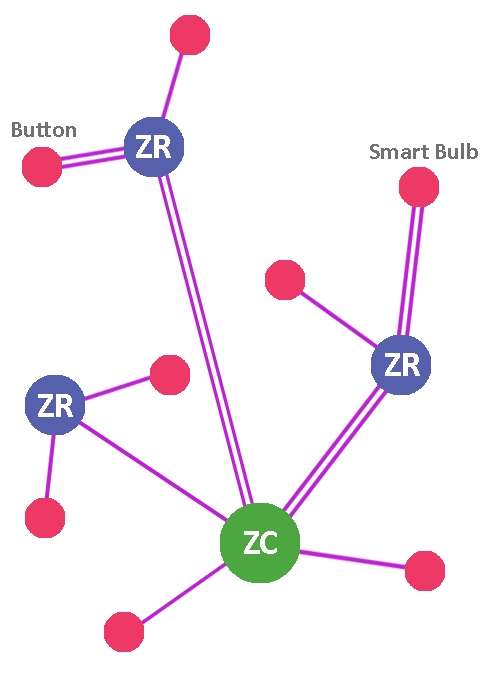Centralized Control
In this control system, all of the data is exchanged between the individual end devices and the coordinator / controller, which is the Raspberry Pi 3B based hub. This gives the control system full control over every device on the network, and full visibility of the availability, performance, and health, of every device on the network, while exploiting the intrinsic mesh capability of the ZigBee and Z-Wave networks.

When a button pressed to, say, switch a light on or off, the request is sent from the button to the control system, in the form of a frame, and the control system then sends an instruction for the light to be switched on or off. The receiving device might be a smart switch, a smart relay, or a smart bulb. The most likely path for these frames is shown by the double lines in this diagram.
In other systems, pressing a button might cause that button to send the instruction directly to the receiving device. Technically, this is known as pairing the button to the receiving device. In this system, every device is only paired with the control system.
As with any conventional control system, the actual control of the system, which is through the software running on the hub, is centralized. By communicating individually with each device, the control system is able to exercise full control over all of the devices, and monitor all of the data reported by every device.
The centralized approach simplifies both the initial installation of the devices, and their ongoing maintenance. It also enables the user to be alerted to any exceptions that might arise. These include signal quality and strength, battery level, and changes to the level of radio frequency interference. It also enables the control system to locate any device failures to the individual device.
The fundamental operation of the mesh networks remains unchanged. Smart plugs, and other mains powered devices, still act as routers / repeaters in the normal way, by relaying data between other devices, and enabling the network to be extended.
This system design also enables the communication between each device and the control system to be tested in precisely the configuration that they will be used. Once profiled, the frame exchange between each device and the control system can be expected to always conform to that profile.
Although the frames are sent from the originating device to the hub, and then from the hub to the destination device, the transmission time is only increased by a few milliseconds, at most. The time taken by the hub to process and forward the frames is also negligible, due to the high performance of both modern network adapters, and the Raspberry Pi 3B.